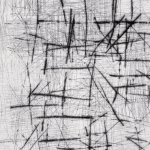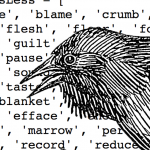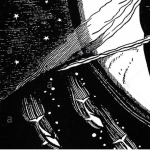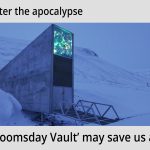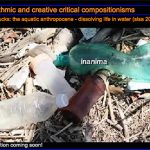2019
Rettberg's and Jackson's interview, and their creative work's direct engagement with environments anticipate the themes in a forthcoming ebr gathering by Eric Rasmussen and Lisa Swanstrom, titled Natural Media. More than just an articulation of environmental 'issues,' the creative work of Jackson and Rettberg actively integrates snowfall in Brooklyn, tattooed skin on bodies, pollutants in Jersey City and New Orleans (post-2012), and other particles and particulars that are touched by natural and medial ecologies.
This conversation is published as the fourth in a series of texts centered around the publication of The Metainterface by Søren Pold and Christian Ulrik Andersen. Other essays in the series include: The Metainterface of the Clouds, Always Inside, Always Enfolded into The Metainterface: A Roundtable Discussion. and Voices from Troubled Shores: Toxi•City: a Climate Change Narrative.
2018
This discussion is adapted from a presentation by Roderick Coover and Scott Rettberg of Toxi•City and other CRchange projects at the Arts Santa Mònica museum in Barcelona on March 3, 2016.Toxi•City was exhibited there as part of the “Paraules Pixelades” exhibition.
This conversation is published as the third in a series of texts centered around the publication of The Metainterface by Søren Pold and Christian Ulrik Andersen. Other essays in the series include: The Metainterface of the Clouds, Always Inside, Always Enfolded into The Metainterface: A Roundtable Discussion. and Room for So Much World: A Conversation with Shelley Jackson.
The following assemblage, one of a series initiated with ebr version 7.0, is composed of four elements: a presentation (for release in October 2018) of Søren Bro Pold & Christian Ulrik Andersen’s The Metainterface including an excerpt from “The Cloud Interface: Experiences of a Metainterface World” chapter of the book (with permission from The MIT Press); a discussion (November 2018) by Scott Rettberg and Roderick Coover about the visual and narrative design of Toxi•City: a Climate Change Narrative, and a discussion of issues raised by The Metainterface (December 2018) that were taken up by the Bergen Electronic Literature Research Group during the EcoDH seminar, University of Bergen, June 14, 2018, and an interview with Shelley Jackson (January 2019) focused on her project Snow and her new novel, Riddance; or, The Sybil Joines Vocational School for Ghost Speakers & Hearing-Mouth Children. Contributors: Christian Ulrik Andersen, Roderick Coover, Shelley Jackson, Elisabeth Nesheim, Scott Rettberg, and Lisa Swanstrom.
This essay is published as the first in a series of texts centered around the publication of The Metainterface by Søren Pold and Christian Ulrik Andersen. Other essays in the series include: Always Inside, Always Enfolded into The Metainterface: A Roundtable Discussion., Voices from Troubled Shores: Toxi•City: a Climate Change Narrative and Room for So Much World: A Conversation with Shelley Jackson.
Without anonymous peer review, there can be no formal recognition of literary scholarship, and ebr is no exception. That said, our journal looks for occasions to turn our confidential reports into public riPOSTes, if the reviewer is so inclined. In this essay, our colleagues from Coimbra, Manuel Portela and Ana Marques da Silva, stage reflections on the peer reviews that their own scholarly work has generated, in earlier submissions to other peer review outlets. The "metapaper" that results, is a further step in the initiative not to do away with peer review, but to bring the process into the public sphere.
This essay has been reprinted from the journal CounterText (2.2) by permission of Edinburgh University Press.
Instead of simply reviewing Vibrant Matter byJane Bennett (Duke 2010), author Dale Enggass applies Bennett's "Political Ecology of Things" to longstanding (and not yet resolved) themes of salvation, materialism and transcendence in Melville's Moby-Dick and Pamela Lu's Ambient Parking Lot.
Max Nestelieiev responds to Joseph McElroy’s recent ebr essay, exploring how Soviet control enforced onto writers a self-censorship for which their work paid the price.
A dedicated, elaborated thought stream from an author who, like McElroy, has read and thought about the presence of censorship (as theme and experience) in novels by Ross Gibson, Shariar Mandinipour,J. .M. Coetzee, W. G. Sebald, Mark Z Danielewski, Italo Calvino, and Fernando Pessoa. Author David Thomas Henry Wright explores the (loss of) authority of the literary novel in a time of "networked glut" while at the same time seeking trans-national, trans-historical, photographic, multi-medial and inter-generational "alliances" that might redress contemporary censorship and "deeply shape (or erode) contemporary literature."
Bergthaller's essay originally appeared in the collection, Ecological Thought in Germany. It is reprinted here, with permissions from Lexington Books, as part of an ebr gathering on Natural Media (December 2019).
2016
In response to Jeanette McVicker's review of The Planetary Turn, John Bruni examines what it means to theorize a sense of the planetary.
Using recent events of planetary significance as a point of departure, Jeanette McVicker reviews The Planetary Turn: Relationality and Geoaesthetics in the Twenty-First Century, edited by Amy J. Elias and Christian Moraru.
In this review of How to Be an Intellectual: Essays on Criticism, Culture, and the University, Christopher Findeisen analyzes Jeffrey J. Williams's assessment of higher education in the United States. Linking the decline of funding for universities and colleges, rising student debt, the exploitation of academic labor, and the digital humanities, the review examines the omission of accounts of "the not-so-remarkable everyperson academic, the untenured, the up-and-comers, and the downtrodden."
Lisa Swanstrom interviews Matt Kenyon, founding member of S.W.A.M.P. (Studies of Work Atmosphere and Mass Production, co-founded with Doug Easterly), an Associate Professor of Art in the Stamps School of Art and Design at the University of Michigan, and a 2015 TED Fellow.
In this review of Heather Houser’s Ecosickness in Contemporary U.S. Fiction, Sharalyn Sanders identifies the hopeful potential for environmental justice via contemporary literature. Finding a solidarity implied between intersectional identities and ecocriticism, Sander’s finds in Houser’s call for “scholarly activism” an antidote to the detachment which threatens to thwart environmental awareness.
In this introduction to her gathering on Digital and Natural Ecologies, Lisa Swanstrom pulls back from the tendency towards apocalyptic speculation that is commonplace in popular discourse of technology and nature. Instead, Swanstrom offers a more grounded discourse that addresses the impact of the digital on the natural.
In this review of Timothy Morton's Hyperobjects, Robert Seguin contemplates the implication of the text's eponymous subject on art, philosophy, and politics. The "hyperobject," a hypothetical agglomeration of networked interactions with the potential to produce inescapable shifts in the very conditions of existence, emerges as the key consideration for the being in the present.
2015
Jerz and Thomas identify our fascination with natural cave spaces, and then chart that fascination as it descends into digital realms, all in order to illustrate the importance of "the cave" as a metaphor for how we interact with our environment.
In the course of examining a number of key concepts in New Materialism, eco-criticism, and feminist philosophy, Melanie Doherty delves into Jamie Skye Bianco's digitally generated "postnature writing." Doherty's rich knowledge of contemporary ecofeminist debates helps to contextualize Bianco's hybrid performance-based works that draw upon a database of philosophical texts and landscapes, like the Salton Sea and Dead Horse Bay, that have been marred by histories of human misuse.
In Sublime Latency and Viral Premediation, Kim Knight addresses the “eco-poetics of the viral” across the biological, social, and digital. Through an analysis of the spread of digital infection, the dynamics of anti-virus software, and digital arts practices, Knight discusses a poetics of fear and desire that is instrumental to the transmission of this virtual pathology. Knight continues, drawing parallels with crowdsourced epidemiology apps that track illness and promote physical health, and makes a powerful case for what Richard Grusin has called the “premediation” of anxiety as a strategy for managing affect in the 21st Century.
A serious (and playful) consideration of the power of “things,” Christopher Leise reviews Jane Bennett’s Vibrant Matter: A Political Ecology of Things through the lens of the Lego Movie. The implied dynamism of the manipulable modularity of the Lego world provides strong resonances with Bennett’s take on “thing-power” and distributed agency, while the crisis in the plot of the Lego Movie offers an apt illustration of the dangers of human exceptionalism discussed in Bennett’s text.



